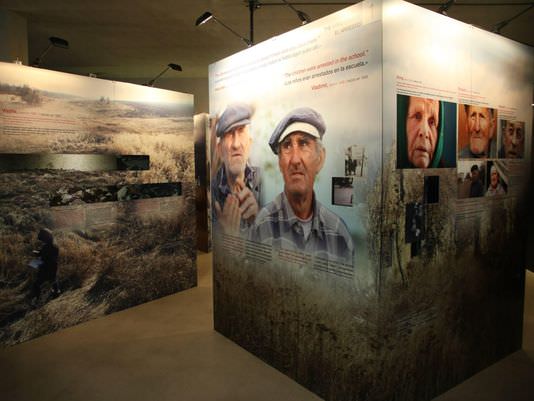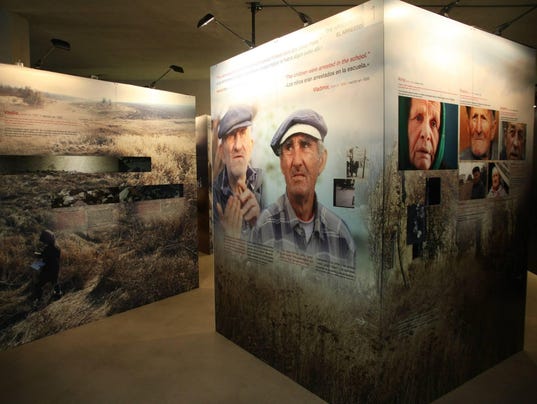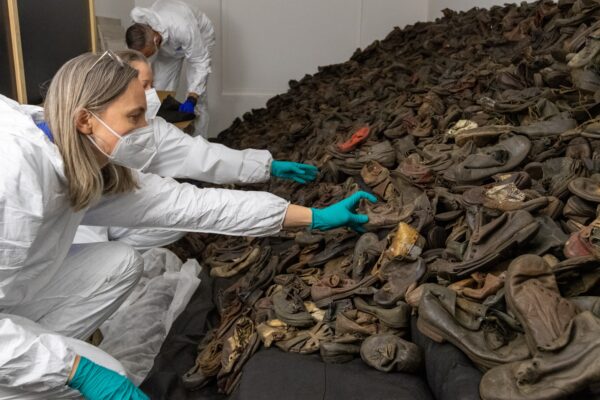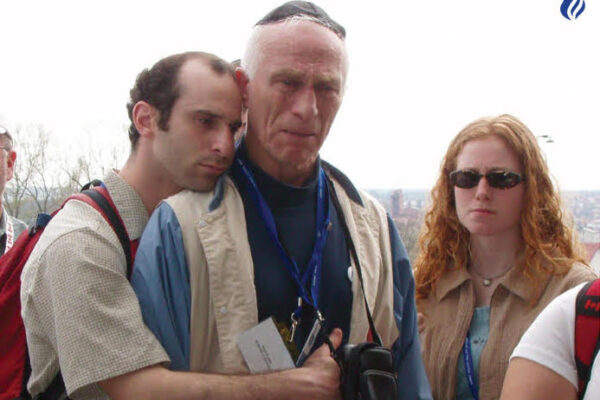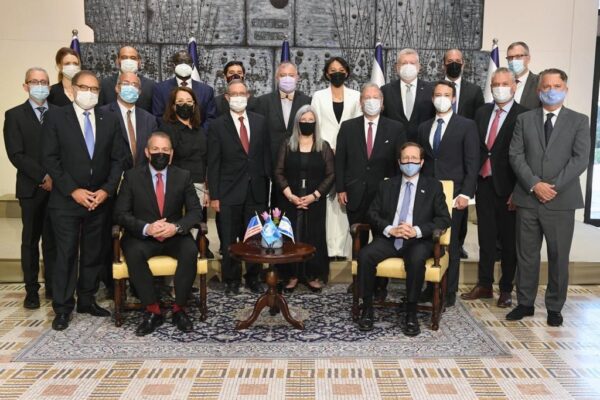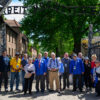During that period, the Nazis wiped out nearly every Jew in the region — in all, some 2 million people were killed. Until recently, the genocide by mobile killing units in Eastern Europe, part of Adolf Hitler’s broader plan to eradicate the Jews, were a little-known chapter of World War II and the Holocaust.
But thanks to the investigative work of a Catholic priest, Father Patrick Desbois, and his organization, Yahad-In Unum (which means “together in one” in a combination of Hebrew and Latin), that chapter of history is being shared in a traveling exhibit, “Holocaust by Bullets,” now at the Holocaust Memorial Center in Farmington Hills.
The exhibit includes archival images of the round ups, shooting sites and lootings, maps and testimonies from witnesses. Desbois and his organization have spent a decade traveling throughout Eastern Europe, locating the murder sites, amassing forensic evidence and interviewing witnesses.
For decades, knowledge of the murders was limited to the witnesses and obscured by Soviet secrecy and anti-Semitism. The collapse of the Soviet Union created opportunities to access records, interview eyewitness and broaden research.
“In this exhibit, the visitor becomes a ‘witness’ to the heinous crimes of the Nazi squads,” Desbois, who has devoted his life to researching the Holocaust and fighting anti-Semitism, said in a statement. “Some of the images, of course, are disturbing, but we tried to present them in a thoughtful and discreet fashion.”
The three-sided displays are arranged in chronological order of the five dehumanizing steps in the systematic murders: The Arrest. The Road. The Undressing. The Shooting. The Looting. Graphic photos are inset in the display, out of sight of children. Desbois and his group have identified 1,893 execution sites in seven countries, including Lithuania, Moldova and Romania.
The aim of the exhibit is not only to educate but to provide further evidence of the Holocaust, to counter those who contend the genocide never occurred, says Michael Leibson, a docent at the memorial center. “How can you deny actual bullets dug up from graves or the testimonies of these witnesses? Why would they lie?”
“Many of these people have never talked about what they saw,” he adds. The organization has videotaped testimonies from 4,714 eyewitnesses. “These are things that these people have not talked about in half a century.”
The displays include present-day photographs of eyewitnesses, abandoned homes and villages of the victims, and the sites of the mass shootings.
“These witnesses have lived with these secrets their whole lives. They saw the Nazis kill their neighbors and their schoolmates,” says Cheryl Guyer, interim executive director of the memorial center. “There is no language to describe what they saw or to fully understand it.”
The village-by-village, on-site murders perpetrated by the Nazis and collaborators became a model for the future: Genocides in Cambodia, Rwanda, Darfur, the Balkans and Syria.
“It is a history lesson and a lesson for humanity. Acts of genocide and mass atrocities still exist today in broad daylight,” Guyer says.
Originally published HERE
